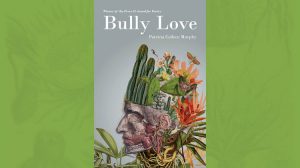The Clearing by Allison Adair – Winner of the Max Ritvo Poetry Prize / Milkweed Editions / 978-1-57131-514-4 / 88 pages / June 9, 2020
 I first cracked open Alison Adair’s The Clearing at the end of May, just as the national consciousness, already distressed by the ongoing pandemic, plunged deeper into the thicket of police and racial violence. Admittedly, reading was slow going at first, hindered by the constant flow of charged, urgent information from social media and news outlets. Like many of my colleagues, I turned my focus outwards to fulfill calls to action for the preservation of Black lives. When I did find energy to read, I found that Adair’s language, structured into dense metaphorical networks, also placed vigorous demands on attention, and so I could only take in about five pages at a time.
I first cracked open Alison Adair’s The Clearing at the end of May, just as the national consciousness, already distressed by the ongoing pandemic, plunged deeper into the thicket of police and racial violence. Admittedly, reading was slow going at first, hindered by the constant flow of charged, urgent information from social media and news outlets. Like many of my colleagues, I turned my focus outwards to fulfill calls to action for the preservation of Black lives. When I did find energy to read, I found that Adair’s language, structured into dense metaphorical networks, also placed vigorous demands on attention, and so I could only take in about five pages at a time.
At once luxurious and disorienting, Adair’s poems cultivates layers of trauma and violence from and onto the feminine body. The title poem introduces visceral imagery of fertility, of mutilated or decayed fleshiness, insisting without clarifying that something has gone horribly wrong. Instances of emptiness and loss (“the clearing,” “dark birds” that “peck her sockets clean,” “teeth falling out”) resound with echoes of the uterine cavity.
Indeed, escalations of portentous symbols reveal a miscarriage later on (in titles such as “Ways to Describe a Death Inside Your Own Living Body,” and “Memento Mori: Bell Jar With Suspended Child”). Cyclical trauma, painful experiences that are interwoven with the speaker’s experiences of her own body and womanhood, repeat, evolve, and compound over the book’s 47 poems:
We’ll write this story again and again,
how her mouth blooms to its raw venous throat
A strangely timely and ominous early poem, “After the Police Have Been Called,” highlights the role of the title throughout the book as setting a frame for a concrete, tangible, and recognizable experience, although the poems themselves are populated with somewhat difficult-to-grasp but beautiful and surprising figurative comparisons. This poem in particular, meanders from a “lapis sash of a mallard’s wing” to “the sides of your tongue” then to a violin bow, before culminating in two stanzas that, at this stage in history, I couldn’t help but read as
part of the national discourse:
When you begin to hate a man, his stunt fingers
swell with fat. His red face sweats strawberry rot.Like a stuck pig, the door, if locked, brays and grunts…
This poem, like many others, envelope the reader into a heavy, oppressive sense of rural place, of economies collapsed under capitalist strain: “the town is small / but it’s his.” Peppered throughout the poems are touchstones of concrete place that deal with fallen, decayed violent capitalist “Americanness” – poems with titles like “Gettysburg,” “Mine Fire at Centralia,” and “Disaster at Gold King Mine.” Many later poems navigate being a woman in rural America, often transforming tropes of “country” life heard on the radio into potential scenes of lost agency, always loaded with undertones of fecundity:
Young and younger fumble at each other by
the swollen creek. Under them, larvae drill snails.
There is palpable mystery in Adair’s atmospheres, which are ripe with the alienness of a lost birth and the sense of infestation: “But something had already laid its eggs / in a place I couldn’t reach.” The poems reach to construct an otherworldly beauty out of complex, memory-laden narrative threads that sometimes seem to (intentionally) go nowhere. Adair’s most successful images contain direct, assertive syntax and inventive, haunting nouns – “I, too, trusted the itch of a velvet antler to carry my hunger toward a grove” and “In a ghost town, bowls of thin soup/ steam on every edge.” We find breath and pause in first-person poems depicting a mother’s relationship with an inquisitive young daughter, although even those end in glimpses of death.
The Clearing is a book where the process of reading mimics the imagistic architecture. At times, the diction is so lush that it verges on overly-poeticized, very self-conscious that it is “poetry.” The result is an immersive linguistic world that invites a lingering, engaged contemplation and invites repeated readings and renderings of your own experience into its pages.





Leave a Reply